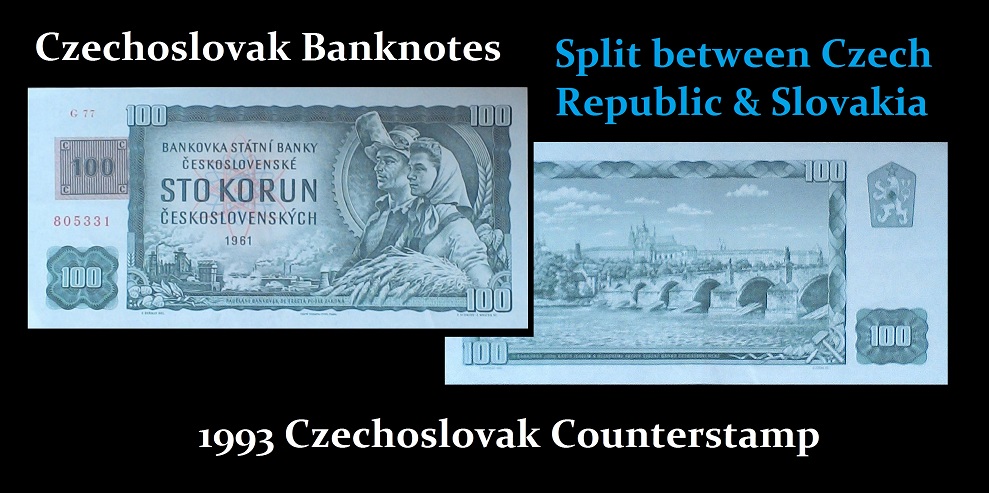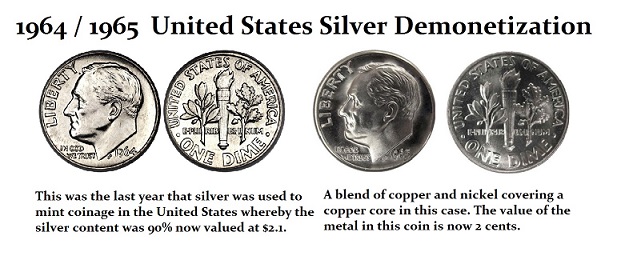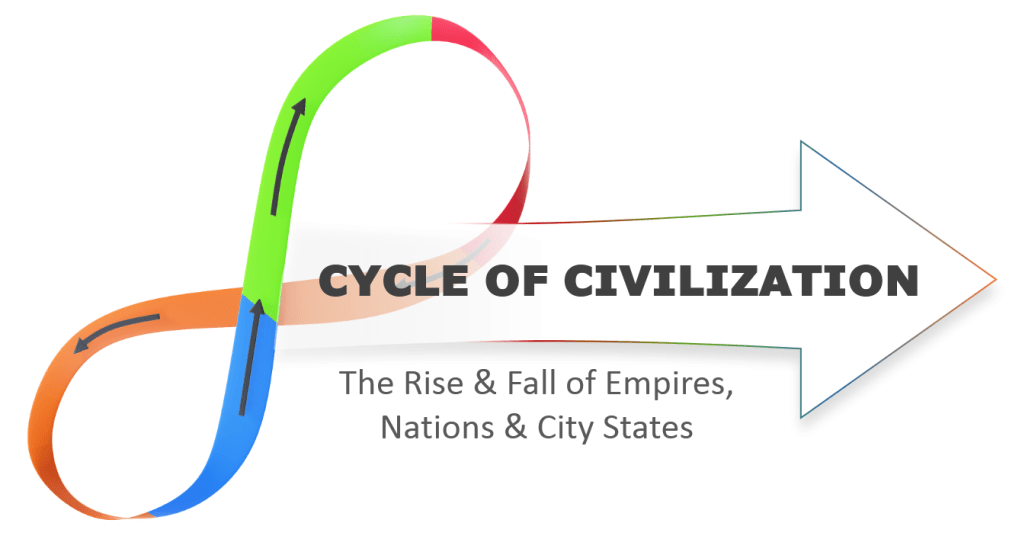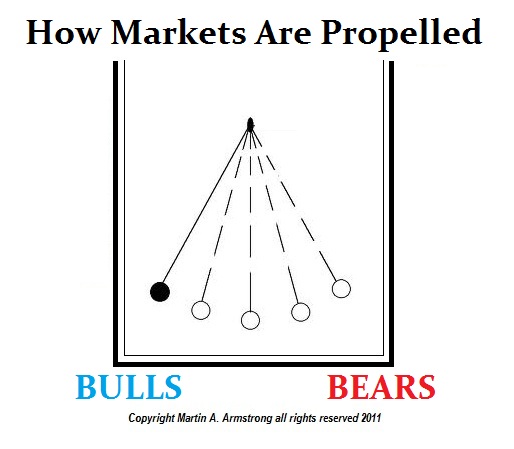QUESTION: Mr. Armstrong; Nobody seems to be able to answer this question. How fast would the Euro disintegrate if the EU appears to be on the verge of collapsing assuming Britain were to leave? There is a consensus that other states would then begin to also prepare referendums to leave. This question become paramount and you may be the only person with such a database to offer guidance other than just personal opinion.
Thank you for your consideration
KW
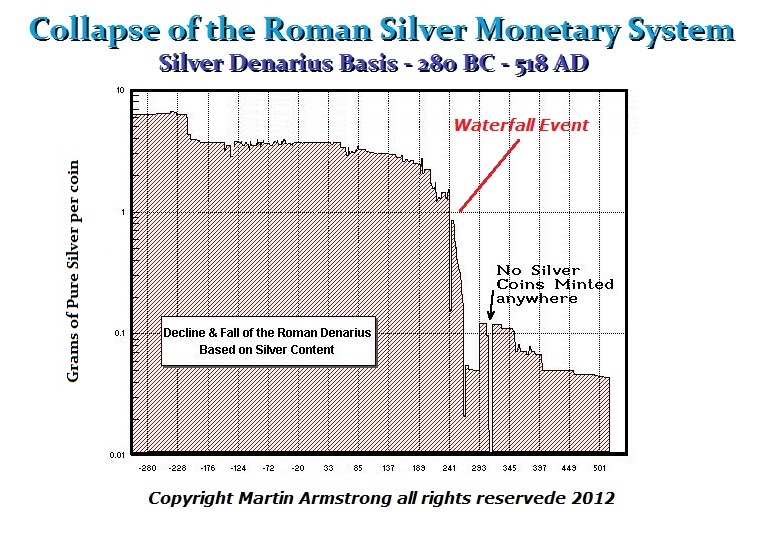 ANSWER: Our number one objective has always been to define time. The very reason we reconstructed the world monetary system, bought coins from around the world, and created the largest collection of Roman coins ever assembled was to answer the question – How fast did Rome fall? Was the collapse gradual like a 747 coming in for landing, or was it rapid like a waterfall? The answer that emerged we called the Waterfall Effect. You can see from the chart presented that the collapse took just 8.6 years out of one thousand. The decline and fall monetarily was extremely rapid once Valerian I was captured by the Persians in 260 AD, and his son Gallienus was finally killed in 268AD.
ANSWER: Our number one objective has always been to define time. The very reason we reconstructed the world monetary system, bought coins from around the world, and created the largest collection of Roman coins ever assembled was to answer the question – How fast did Rome fall? Was the collapse gradual like a 747 coming in for landing, or was it rapid like a waterfall? The answer that emerged we called the Waterfall Effect. You can see from the chart presented that the collapse took just 8.6 years out of one thousand. The decline and fall monetarily was extremely rapid once Valerian I was captured by the Persians in 260 AD, and his son Gallienus was finally killed in 268AD.
Skeptics who simply refuse to believe anything try to claim history was irrelevant because it was long ago and this time it is different. Every fool who buys government debt convinces themselves that this time is different and government will never end. Well, the Bretton Woods fixed monetary system came under pressure and collapsed in August 1971. When did the pressure begin? Hm. Well, it was about 8.6 years prior when Kennedy agreed to end silver in the coinage. That was 1963 and the last coin to be produced in silver was 1964.
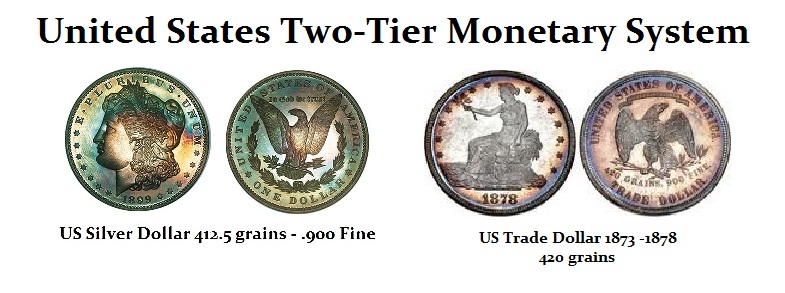
How about the two-tiered monetary system in the U.S. whereby we minted U.S. Silver Dollars of a different weight from those minted for international trade? That system lasted a half-cycle or about 4.3 years. Some coins were produced until 1885, but less than 2,000 were minted compared to nearly 5 million annually between 1873 and 1878.
Pictured at the top of this article is a 1961 100 Korun banknote from Czechoslovakia with a 1993 Czech Republic adhesive stamp. In 1992, Czechoslovakia agreed to split into the Czech Republic and Slovakia. The split was to be January 1, 1993. They attempted to preserve a monetary and economic union. The monetary union was to last for 6 months. There was no effective means to really secure such a union among competing political interests. The monetary union collapsed, nearly perfectly in line with the pi cycle, and they were forced to end it in 33 days.
The note pictured above from our collection shows an adhesive stamp. The people in Slovakia feared what would happen and there was no confidence in the new state. Capital fled Slovakia to the Czech Republic since they feared that a Slovakian currency would lose its value rapidly. With a full capital flight in motion, the Czech Republic decided to split the currency on January 19, 1993, just 17.2 days into the system (2 x 8.6).
There were secret negotiations and a date was agreed upon for February 8. This was announced on February 2 and capital controls were imposed. The old currency was to receive a stamp, making it a new currency (as shown in the photo). The Czech Republic was to stamp the notes in circulation in its territory and Slovakia was to do the same in their territory. The people then drove from Slovakia to the Czech Republic with their currency to receive a Czech stamp rather than a Slovakian stamp. These notes were then replaced by their new currency in August of 1993. This incident proves that there will be a tremendous human reaction based upon who they think will survive. The neutral ground will be the U.S. dollar.
It does not matter what century we investigate. The timing always remains the same. Simply said, technology may change, but humans remain the same as we are driven by our emotions. Timing is about human confidence.

